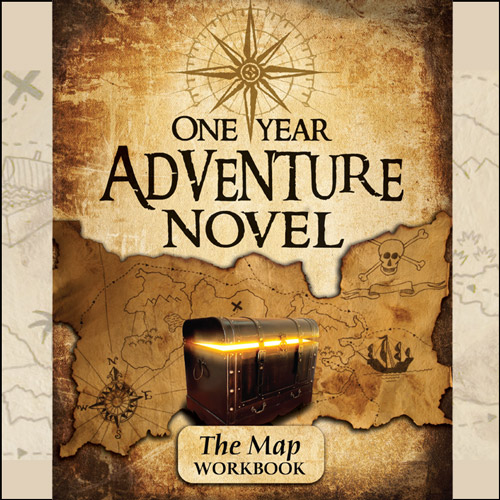Using Routine to Combat Writing Anxiety
By Gabrielle Schwabauer, Staff Writer
When I wrote my first novel, the thought of having to produce words on command made me feel sick inside. Every time I sat down in front of my computer, anxiety flared up in my chest, begging me to close the document. But I desperately wanted to finish my novel, so I committed to completing 750 words, five days a week, no matter what.
Three years later, I’ve taught my mind to expect writing, to think of it as a daily responsibility like making supper or taking a shower. I’ve taught my anxious brain that I can produce words on command, and that if it’s a difficult and frustrating process, that’s okay.
Here are some strategies that made writing manageable for me:
Outline Your Novel
Examine what kind of story you want to tell before you tell it, and then choose a method of outlining that fits your story and personality.
Outlining by story trajectory
This method is based on the overall plot arc. What is the story goal? How does your hero change from beginning to end? Some writers start with a desired endpoint and trace the logical steps that must precede it. If your hero becomes a pirate captain at the end of the story, how can this outcome seem impossible off the start? Let’s say he’s terrified of water, living in poverty, and enslaved to a cruel blacksmith.
Outlining by chapter
For those who have used The One Year Adventure Novel (OYAN) writing curriculum, this method will be the most familiar. Here, you break down your story idea into chapters, each centered around a change of values. Within the chapter, what shift takes place? How does the hero get closer to attaining the story goal, or how does she fail so that the goal seems even more impossible?
Outlining by scene
When I write, I include one sentence per scene within each chapter document, to give myself a general idea of the length of the chapter and what needs to happen to get from Point A to Point B. Then, when I start tackling the book, I’m not faced with the problem of “what needs to happen next?” at every new chapter. I simply follow the guidelines I’ve already laid down.
Outlining by character or element
My second novel featured a family of seven, with a ten-year-old girl as the narrator. The primary subplots centered around her father and her five siblings. Since this was a slice-of-life novel rather than an adventure novel, I outlined with an eye to the progression of each of these family-member subplots. I had plotted out twenty chapters, so I pasted twenty sticky notes to the top of my closet doors. Having assigned each sibling his or her own color of sticky note, I tracked which sibling subplots made an appearance in each chapter, writing one sentence on each note to indicate how Duncan or Laurel or whoever entered into my narrative at that point in the story. After laying out this giant, multicolored grid, I could see at a glance where I’d dropped threads.
This type of planning might be overkill for a traditional adventure story, but for a long and complex fantasy composed of intertwining subplots, or a man-who-learned-better tale full of overlapping character arcs, it can help the author to trace each individual thread to make sure that nothing disappears – or reappears at the end out of nowhere.
Set Goals
Okay, you’ve drawn up an outline. Maybe it’s a roll of graph paper tacked to the wall and lined with color-coded notecards, and maybe it’s a one-page plot summary, but it’s there.
Now you have to write the book.
This is where well-meaning writers tend to fall apart. Even with a compelling plotline, an engaging cast, and a poignant theme, your book must be written.
It’s time to set goals.
Setting a timed goal requires you to spend a certain amount of time writing on a certain number of days per week. This goal is a good fit for those who struggle to implement writing as a regular activity—setting aside a specific time for writing (say, 45 minutes per day, five days per week) means that you can plan your schedule around writing rather than asking yourself every evening “Do I have time to write today?”
If you set a wordcount goal, you commit to writing a certain number of words a certain number of times per week. This is the type of goal I prefer, because it provides a tangible sense of progress. My novel grows by at least 1,000 words per day, come rain or shine or a five-ton writer’s block. If you choose this strategy, set your wordcount a few hundred words past your comfort zone. If you can keep typing even when it feels like pulling out your own hair, you will often emerge on the other side with a more focused mind, one that finally settles down, cooperates, and produces a story.
In a project goal, you commit to working on one story until it is complete. No hunting down passing plot bunnies. When you get stuck in Chapter 4 because you’ve always hated middles, refer back to your outline, search for conflict, and ask for help from a friend; don’t start that newer, shinier, more exciting story.
Lastly, don’t forget editing goals. If you want to improve an old story, set daily goals the same way you would for a rough draft. For example, you might exchange novel critiques with a friend and commit to implementing their critiques by Christmas. You might take your 200,000-word tome and edit a chapter every week, resolving to trim at least a 200 words per day. You might divide your novel’s number of pages by 90 and commit to editing x number of pages per day: revision 1 complete in three months!
Whatever goal you choose, strike a balance between challenge and attainability. If you want to finish your novel by the end of the year, think seriously about what kind of schedule you’d have to keep in order to make that happen. If you don’t stretch your writing comfort zone—even if it means you suffer through the “grind” of daily writing for a few months—you’re never going to become more comfortable with the routine.
At the same time, though, don’t set an unrealistic goal based on an idealized version of the future. You won’t meet the goal, you’ll feel constantly guilty for things like “doing homework” and “sleeping,” and you’ll fall so far behind that writing will get tossed to the side again. When evaluating your schedule and priorities, be fair. Don’t commit to something you know will overwhelm you.
Utilize Outside Resources
Perhaps you, like so many others, find yourself using your “writing time” to craft moodboards in Photoshop, run your characters through online personality quizzes, or scour YouTube for a song that will perfectly encapsulate your heroine’s emotional turmoil.
These resources can prove to be a dangerous distraction. But they can also be twisted to serve your purposes—that is, to help you write more frequently and more effectively—if you know how to trick your brain.
Reference Images. Don’t let yourself believe that Pinterest counts as writing. There’s nothing wrong with using images for inspiration, but it’s not a replacement for buckling down and doing the work. If you want to comb the Internet for the perfect photo, do it in your free time. Keep the time you’ve dedicated to writing a writing-only zone, and call picture hunting what it is: fun.
Playlists. The key here is, again, to minimize the possibility for distraction. If music helps you to write, spend an afternoon creating a playlist, order the songs in a way that evokes the mood of your novel or follows your protagonist’s arc, and stick with it. Build a habit of listening to the same songs in the same order every time you write. I adopted this practice while writing my first novel, and after a few weeks, hearing the first few chords of the first song triggered a more focused writing mindset.
Location. If you can, dedicate a time and space to writing on a regular basis. Pick a spot on the couch and sit there every time you write. Don your writing cap. Sit on your bed and lean against the wall. If you can do something about your writing routine in the same way every time, be it time, place, or (ideally) both, those associations will start to work in your favor, prompting your mind to be ready for writing right away.
Hopefully, you’re noticing a trend here: consistency. Establishing routines around writing teaches you to slide into the proper headspace like a favorite t-shirt, faded and familiar. It might be a painful slog at first, but I can promise you: your future self will thank you.
…
Do you have any writing routines that help you to write consistently?
…
About Gabrielle
Gabrielle Schwabauer has loved stories for as long as she can remember. (The Lord of the Rings holds the top spot, as it has for fifteen years running.) She likes reading books, playing video games, eating blueberry pancakes, looking at pictures of borzoi, and having already written today.



